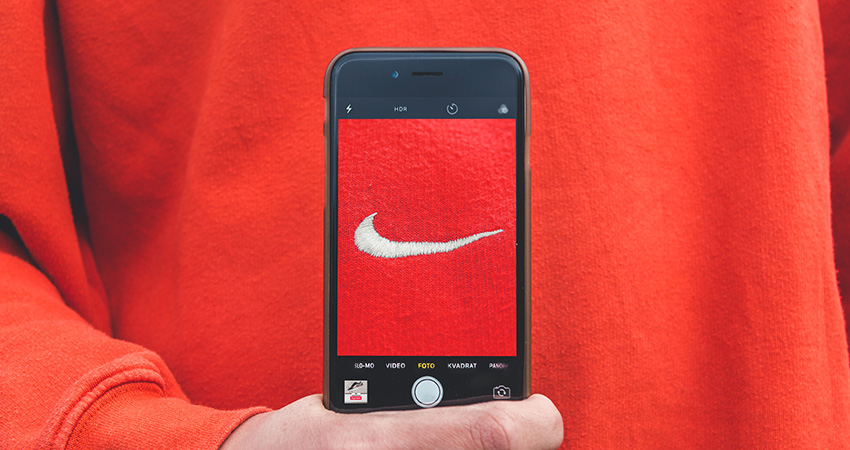Brand loyalty is being challenged, highlighting the need to understand shifting consumer preferences (credit: Kristian Egelund on Unsplash)
Brand loyalty plays a crucial role in the success of companies across various industries. But the dynamics of consumer behavior are constantly evolving, and recent trends indicate a significant shift in how consumers approach their purchasing decisions.
With affordability now a key factor influencing consumer behavior, the question arises: will the rise of discount retailers and value-pricing-based shopping put brand loyalty on life support? And are luxury brands also feeling the effects of inflation and the possibility of a downturn in the U.S. economy, causing consumers to tighten their budgets for non-essential items?
Adding to retail market confusion, the Conference Board recently reported that its consumer confidence index rose to the highest level since January 2022, far higher than many economists predicted.
Affordability as a Driver of Consumer Shopping Behavior
In an era marked by economic uncertainty and historically high prices, consumers have become increasingly careful about their spending. According to Storebrands, 69% of consumers view value as the most important factor when choosing a brand. Two big factors have transformed the retail landscape: the growing popularity of discount stores and the ease of pricing research. More consumers are shopping online out of convenience, but also because it makes it easier to whittle down their search for the retailer with the best pricing.
This shift has raised concerns about the potential erosion of brand loyalty as consumers prioritize cost savings over allegiance. The implications of this trend extend to everyday brands and luxury ones, as consumers seek value for their money.
The Impact of High Prices, Inflation on Consumer Behavior
Inflationary pressure and economic uncertainty continue to significantly influence consumer spending habits. At the same time, rising prices for essential goods and services have had a trickle-down effect of consumer budget tightening. Discretionary spending on non-essential items has also declined.
A recent Wildfire survey found that 45% of respondents said they spent less on non-essential items such as travel or dining out in 2022 than in 2021, while 79% reported purchasing more generic brands and discount products. And in the third edition of its “Cost of Living” survey in April, JPMorgan reported that 75% of U.S. consumers expect to reduce non-essential spending by 6% or more this year.
Implications for Everyday Brands
As consumers gravitate towards discount shopping and prioritize affordability, everyday brands must adapt their strategies to remain competitive. Wildfire’s survey found that 73% of consumers are more interested than ever in using coupons and discounts due to the uncertain economy.
Recently, the Wall Street Journal said consumers are buying less name-brand groceries. The article cited NielsenIQ data stating private label brands made up 18.7% of center-aisle grocery sales, up from 17.9% in 2022. And finally, 87% of consumers in the Wildfire survey said these new shopping habits will stick even after the economy smooths out. Consumers are clearly becoming more value-focused and plan to keep shopping smarter and stretching budgets.
Based on these indicators, focusing on providing the best value and testing competitive pricing with focused discounting strategies will be crucial for brands, especially as consumers indicate they’ll keep seeking the most for their money.
Implications for Luxury Brands
Even luxury brands, known for their exclusivity and high price points, are not immune to the impact of changing consumer behavior. In the Wildfire survey, only 13% of consumers expected to pay full price when shopping in 2023, which should concern luxury brands, as they typically never do price promotions or other discounts.
Reuters published credit card data from Citi indicating U.S. consumers’ spending on luxury goods pulled back to its lowest level in three years. But on the other hand, China has opened back up after pandemic-related shutdowns and consumers are buying luxury products there with a vengeance. Gold and jewelry in the first two months of 2023 was up 48% compared to 2019 in China, normalizing for the pandemic years. However, much like in the U.S., this uptick in sales can likely be attributed to consumer savings accumulated during COVID-19 lockdowns, resulting in “revenge spending.” As consumers’ accrued savings dwindle, they are likely to become more price-sensitive and discerning.
In a climate of economic uncertainty, luxury brands must strike a delicate balance between maintaining their exclusivity and addressing the average consumers’ affordability concerns. Especially as operating costs rise due to stubborn inflation, they must work hard to deliver more value for increasingly demanding customers. Additionally, creating a perception of value through superior craftsmanship and unique experiences can help luxury brands preserve their brand loyalty. For example, to add more cachet and augment its position as an aspirational brand, Gucci opened a flagship store for its highest-end VIP customers in Los Angeles in April.
Conclusion
The evolving landscape of consumer behavior, heavily influenced by affordability concerns, poses challenges and opportunities for brands across the retail spectrum. Ongoing consumer trends highlight the need for brands to understand and adapt to changing consumer preferences. By embracing brand-appropriate strategies that prioritize high value for the money, workmanship and aspirational qualities, even luxury brands can navigate these turbulent times and continue to foster enduring brand loyalty.
Michelle Wood is VP of Merchant Development for Wildfire

